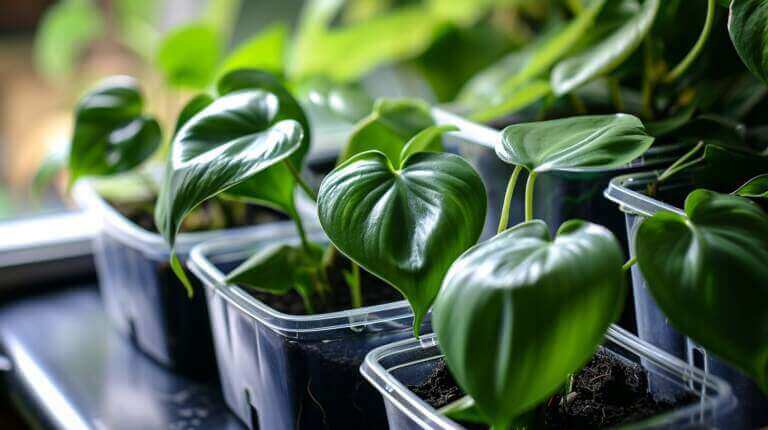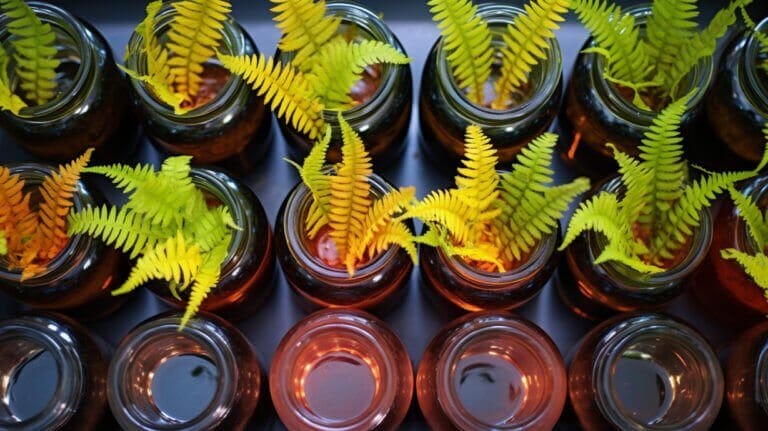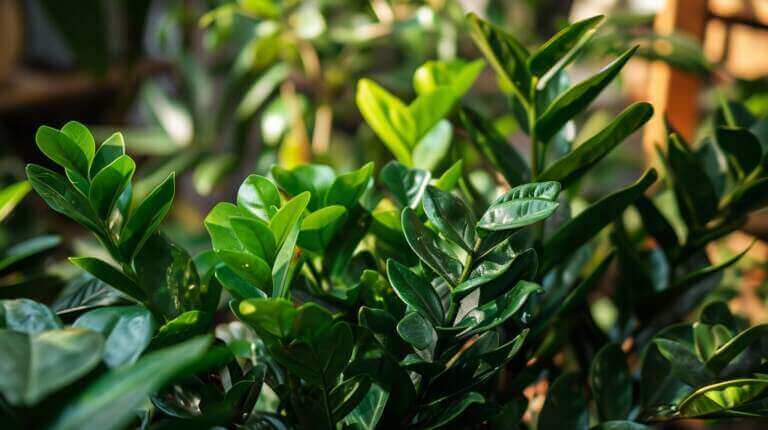Lucky bamboo, also known as Dracaena sanderiana, is a popular indoor plant with symbolic meaning in Chinese culture. It is believed to bring good fortune, prosperity, and resilience. When it comes to watering lucky bamboo, there are a few key points to keep in mind.
Firstly, it can be grown in either soil or water. When planting in soil, use a well-draining mix comprising one-third sand, one-third peat moss, and one-third regular soil. It is important to choose a pot with a drainage hole to prevent water buildup. If growing in water, make sure to use bottled or filtered water, as tap water may contain chemicals that can harm the plant. Change the water every two weeks to prevent the growth of bacteria and algae.
Lucky bamboo should be watered once a week, or whenever the top inch of soil feels dry. Avoid overwatering, as this can lead to root rot. Additionally, be mindful of the light conditions for lucky bamboo, as it prefers moderate to low light. Rotate the plant regularly to ensure even light exposure. Lucky bamboo can also benefit from a light fertilizer every two months or so. Overall, proper watering and care will contribute to the health and prosperity of your lucky bamboo plant.
Key Takeaways:
- Water lucky bamboo once a week, or when the top inch of soil feels dry.
- Use a well-draining soil mix or bottled/filtered water if growing in water.
- Change the water every two weeks to prevent bacteria and algae growth.
- Rotate the plant regularly to ensure even light exposure.
- Fertilize lucky bamboo lightly every two months.
The Significance of Lucky Bamboo in Chinese Traditions
In Chinese culture, lucky bamboo holds great significance and is deeply rooted in traditional beliefs and symbolism. The presence of lucky bamboo is believed to bring positive energy and prosperity to both homes and businesses. Understanding the symbolism associated with the number of stalks can provide insights into the intentions behind gifting and placement of lucky bamboo plants.
Symbolism of the Number of Stalks
The number of stalks in a lucky bamboo plant carries symbolic meaning. For example, two stalks represent love, harmony, and balance, making it a popular gift for couples and newlyweds. Three stalks symbolize happiness, wealth, and longevity, making it a common choice for wishing someone a prosperous and fulfilling life. Seven stalks are associated with good health, making it an appropriate gift for those in need of healing or recovery. The number nine is considered the luckiest number in Chinese culture, and a lucky bamboo plant with nine stalks is believed to bring great luck and fortune, making it a highly desirable and auspicious gift.
“Lucky bamboo is not only a beautiful plant but also a powerful symbol in Chinese traditions. The number of stalks represents different blessings and positive energies, making it a thoughtful and meaningful gift for various occasions.” – Feng Shui Master Zhang
The Art of Gift Giving
In Chinese culture, giving lucky bamboo as a gift is a gesture of goodwill, respect, and well wishes. It is commonly exchanged during special occasions such as weddings, housewarming parties, and business openings. The act of gifting lucky bamboo is believed to strengthen personal relationships, foster positive energy, and bring good fortune to the recipient. Whether it is a single stalk or a carefully arranged arrangement, the intention behind the gift is to invoke luck, prosperity, and happiness for the recipient.
The placement of lucky bamboo is also significant. It is often displayed in homes, offices, and businesses to attract positive energy and abundance. Placing a lucky bamboo plant near the entrance is believed to invite good luck and prosperity into the space, while placing it in the wealth corner of a room is believed to enhance financial abundance.
| Number of Stalks | Symbolic Meaning |
|---|---|
| 2 | Love, harmony, balance |
| 3 | Happiness, wealth, longevity |
| 7 | Good health |
| 9 | Great luck and fortune |
https://www.youtube.com/watch?v=j5bu1DR4DUg
By understanding the significance of lucky bamboo in Chinese traditions and embracing its symbolism, individuals can incorporate this beautiful plant into their lives, homes, and workplaces to invite positive energy, good fortune, and prosperity.
Lucky Bamboo Care Tips and Propagation Techniques
When it comes to caring for lucky bamboo, there are a few important factors to consider. First and foremost, providing the right light conditions is crucial. Lucky bamboo prefers moderate to low light, so it’s best to place it away from direct sunlight. This will help prevent the leaves from getting scorched.
Next, let’s talk about the growing medium. If you’re growing lucky bamboo in soil, make sure to use a well-draining mix. A combination of one-third sand, one-third peat moss, and one-third regular soil works well. On the other hand, if you’re growing it in water, bottled or filtered water is the way to go. Tap water can contain chemicals that could harm the plant. Remember to change the water every two weeks to prevent the growth of bacteria and algae.
Temperature and humidity play a significant role in the health of lucky bamboo. It thrives in temperatures between 65 and 90 degrees Fahrenheit and prefers high humidity. Avoid exposing the plant to cold drafts or hot, dry air, as it can cause stress and damage the leaves.
Fertilizing lucky bamboo is essential for its growth and prosperity. Use a balanced fertilizer and apply it lightly every two months. This will provide the necessary nutrients without overwhelming the plant.
Lucky bamboo can be propagated through stem cuttings or division. If you choose the stem cutting method, place the cuttings in water until roots develop. Once the roots are established, you can transfer them to soil or continue growing them in water. Division involves separating a mature plant into multiple sections, ensuring each section has at least one stem and a root system.
Lastly, regular grooming is important for the overall appearance and health of your lucky bamboo. Trim any yellow leaves to promote new growth and maintain the aesthetic appeal of the plant. Also, consider shaping the plant by carefully pruning the stems. This will help create a well-balanced and visually appealing arrangement.
Following these care tips and propagation techniques will ensure that your lucky bamboo plant thrives and brings prosperity to your home or office.
FAQ
How often should I water my lucky bamboo plant?
Lucky bamboo should be watered once a week, or whenever the top inch of soil feels dry.
Can I grow lucky bamboo in soil?
Yes, lucky bamboo can be grown in soil. Use a well-draining mix comprising one-third sand, one-third peat moss, and one-third regular soil.
How should I water my lucky bamboo if it is grown in water?
If growing in water, make sure to use bottled or filtered water. Change the water every two weeks to prevent the growth of bacteria and algae.
What light conditions does lucky bamboo prefer?
Lucky bamboo prefers moderate to low light. It should be placed away from direct sunlight.
How often should I fertilize my lucky bamboo plant?
Lucky bamboo can benefit from a light fertilizer every two months or so, using a balanced formula.
How can I propagate lucky bamboo?
Lucky bamboo can be propagated through stem cuttings or division. Stem cuttings should be placed in water until roots develop, then transferred to soil or water. Division involves separating a mature plant into multiple sections, each with at least one stem and root system.
Why is regular grooming important for lucky bamboo?
Regular grooming, such as trimming yellow leaves and shaping the plant, is important for maintaining the health and aesthetic appeal of lucky bamboo.







